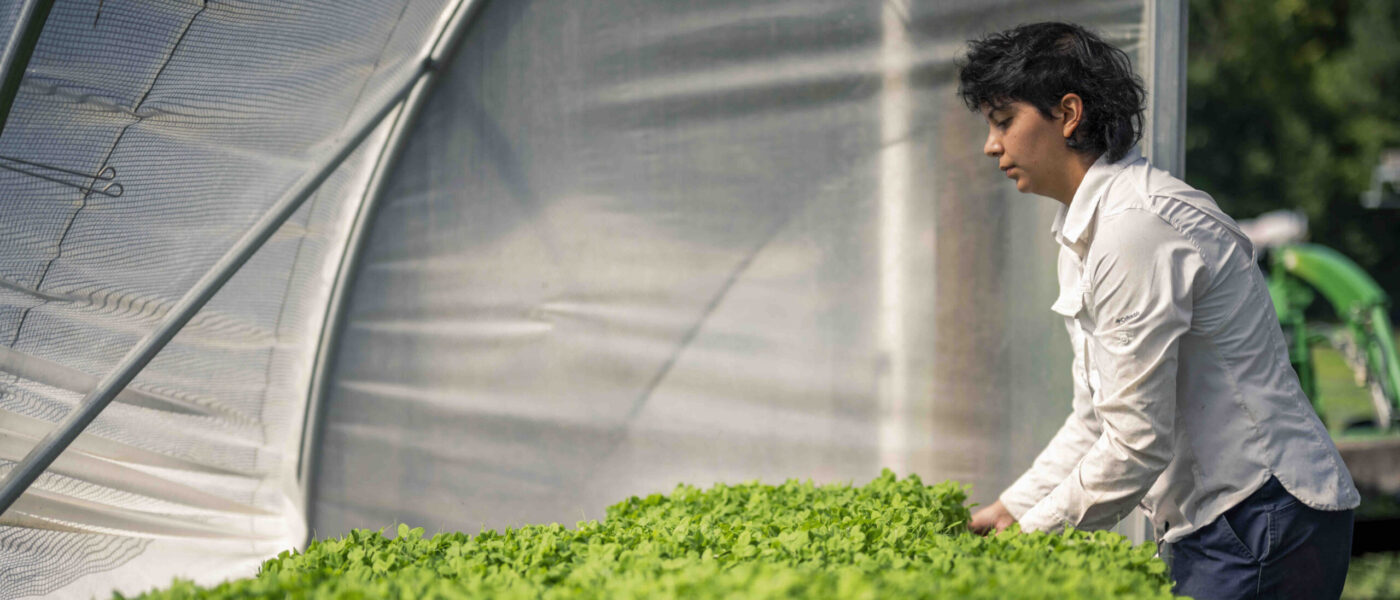Hey Farm Aid,
This year’s wacky weather got me thinking: how is climate change affecting family farmers and what are they doing about it?
Thanks!
Anna M.
Minneapolis, MN
As weather becomes increasingly unpredictable, most family farmers don’t have the luxury of debating about climate change. They feel the sense of urgency every day.
Weather extremes are putting pressures on America’s farmers and moving them to make important changes to their farms, both to adapt to changing weather and to decrease their ecological footprint.
A tough row to hoe
During the 20th century, the Earth’s average temperature rose by 0.6° Celsius, average precipitation increased by 2% and sea levels rose about 20 cm. On the ground, those averages translated into large temperature fluctuations and more extreme weather events (like droughts and hurricanes) throughout the world, particularly in the latter part of the century. Scientists predict that the rate of climate change in the 21st century will be faster than any seen in the last 10,000 years.[1]
Enough has been set in motion to date that regardless of how well we mitigate human impact on the atmosphere, scientific consensus warns that the next several decades will include irreversible shifts in the world’s climate. And that, in turn, will have notable impacts on agriculture.
That’s because farming, as any farmer knows, is so wholly dependent on nature: the quality of the soil, water availability, temperature, sunlight, biodiversity and the pressures of insects, diseases and weeds. Climate change interacts with all of these variables, which are already stressed by development, water and air pollution, invasive species and more.
Officials at the U.S. Department of Agriculture (USDA) have emphasized the need for farmers to prepare. Crop losses from excessive heat, flooding or drought will require more careful planning, changes in crop choices and production methods, and better risk management tools for farms. The spread of weeds and plant diseases to regions where they haven’t existed before is expected, requiring new pest management strategies. Increased carbon dioxide levels in the atmosphere will also favor weed growth and inhibit the efficacy of commonly used pesticides like glyphosate (used in Monsanto’s RoundUp). Crop regions are likely to shift as well—for example, many expect that the Corn Belt will migrate north as temperatures in the Midwest become too hot and arid.
It’s not just crops that feel the heat—climate change affects livestock too. Forage used for grazing cattle suffers in drought and heat, and volatile climate patterns will cause equally volatile prices for feed crops like corn and soybeans.[2] The climate also affects animal health. Heat can reduce the amount of milk a dairy cow produces, the amount of weight a hog will gain and can increase mortality rates in poultry houses.
Adjusting to these changes will be costly and involve many uncertainties. As recently as last year, we saw how extreme weather events can wreak havoc on farmers and ranchers: between devastating tornadoes to the Texas drought, the Southwest’s wildfires, Hurricane Irene and floods along the Mississippi, Missouri and Souris Rivers, not a region of the country was spared and farmers suffered huge losses.
In response, Farm Aid activated our Family Farm Disaster Fund to help farm families cover living expenses and to support relief efforts (including an emergency haylift for livestock farmers struggling to feed their cattle in drought regions). Last year, thanks to your help, we raised and distributed over $30,000 to family farmers impacted by natural disasters.
New ways to farm
Of course, relief efforts aren’t enough to maintain healthy family farms into the future. Worldwide, agriculture contributes 30% of the greenhouse gas emissions from human activities, so farmers and ranchers must be part of the solution by finding new (and rediscovering old!) ways to farm.
Research is showing how farm management practices can reduce greenhouse gas emissions and sequester carbon, while also protecting soil health, water systems and air quality. These are practices we’ve supported here at Farm Aid for a long time. The verdict is increasingly coming down on the side of more localized organic and sustainable farming practices as strong strategies for feeding the world in the face of climate change, population growth and a resource-strapped planet.
For example, on-farm soil conservation practices and nutrient management plans make land less susceptible to runoff, helping to buffer soil loss and leave land in better shape after disaster hits. Practices like crop rotations, cover crops? and crop diversification can also reduce reliance on pesticides and synthetic fertilizers, both of which are costly and guzzle up tons of fossil fuels to produce. Meanwhile, switching to pasture-based systems for livestock can help sequester carbon and reduce greenhouse gas emissions from animal agriculture. Allowing cattle to roam on pasture, for example, helps incorporate their manure back into the soil, lowering methane emissions, especially compared to the large manure lagoons that are hallmarks of factory farms and emit methane and hazardous fumes in staggering amounts.
Many family farmers, like this month’s Farmer Heroes Rosie and Ward Burroughs, are responding to the challenges of climate change by making their farms more sustainable in the ways listed above. They are also working to create better energy solutions, both to use on their farms and for those of us living on the grid. As we continue to deplete oil reserves and endure the consequences of destructive extractive industries for coal, natural gas and other fuels, agriculture will be an important source of energy production into the future, through wind, solar, ethanol and innovative strategies for converting farm waste into fuel.
Farmers are also making the shift by participating in local and regional food systems. More localized food systems, if structured efficiently, can reduce associated emissions and pollution from food transportation, making the link from farm to plate shorter and cleaner.
Shifting away from industrial agriculture, which depends on ever-scarce fossil fuels and contributes to pollution and greenhouse gas emissions, can be difficult. While many federal policies don’t do much to make this transition easy, there are federal programs that help, like the Conservation Reserve Program, which contracts with farmers to take cropland out of production of commodity crops. Shifting this cropland into grasses, restored wetlands or new forestland builds the land’s resilience in the face of severe weather events. Unfortunately, a great deal of the federal conservation programs that will help agriculture be more resilient in a time of climate change are at risk of being cut in current Farm Bill negotiations.
We encourage you to stay tuned to FarmAid.org and to the National Sustainable Agriculture Coalition, to make your voice heard in Farm Bill talks. Also check out the California Climate & Agriculture Network (CalCAN) and the New England Farmers Union for their innovative work in developing climate-friendly agriculture.
Climate change is presenting sizable challenges to America’s family farmers. And while agriculture is surely part of the problem, it is also a critical part of the solution. Here at Farm Aid, we’re committed to helping farmers find new, climate-friendly ways to farm that will keep family farm agriculture thriving long into the future.
Sources
1. Backlund, Peter, et. al. (2008) Synthesis and Assessment Product 4.3 Report: The Effects of Climate Change on Agriculture, Land Resources, Water Resources and Biodiversity in the United States. U.S. Climate Change Science Program and the Subcommittee on Global Change Research. Washington, D.C.
2. Strom, Stephanie. (2012) Climate Change to Affect Corn Prices, Study Says. The New York Times. April 22, 2012.
Further Reading
- Read about the ways our Farmer Heroes Rosie and Ward Burroughs are ensuring their family farm will be sustainable for generations to come.

